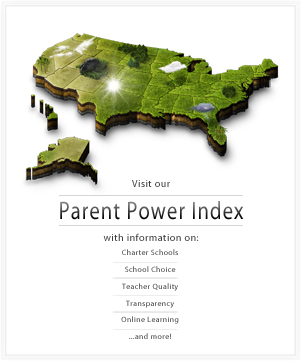An Unfair Attack on Education Reform
In her new book, “Reign of Error,” Diane Ravitch seeks to discredit many of the arguments advanced by the education reform community. She doesn’t like standardized testing, merit pay for teachers or what she misleadingly calls “privately run” charter schools. From the National Assessment of Education Progress, on whose board she served, to international tests and graduation rates, Ravitch finds no reason for education reform – saying that underperforming schools are primarily a byproduct of poverty.
These views are conventional among a segment of the “status quo” education policy community. What makes them noteworthy is that Ravitch was, until about a decade ago, a leading voice in the fraternity of conservative education reformers. She’s now made an ideological U-turn. And she’s fanned the flames with a level of blogging and tweeting that would suggest she’s 16 years old, not a septuagenarian.
Along the way, she’s amassed a following of teachers and administrators who feel that they are unfairly blamed for the poor performance of so many students. But while Ravitch has some relevant anecdotes that merit attention, the underlying premise of “Reign of Error” is simply wrong.
Let’s start with her views on how well U.S. schools are performing. Ravitch dedicates several chapters to a review of the datasets frequently cited by education reformers to illustrate the need for change. Her read of the data is that American students are doing better than ever, and that poor performance is due to poverty, out of wedlock births, diversity (or the presence of immigrants for whom English is a second language) and the fact that U.S. students don’t take tests like the NAEP and PISA seriously.
While there’s been a slight uptick in the performance of U.S. students on these tests, what our kids need to do now in order to get or create the jobs of tomorrow is far more complex than the skills they once needed. Our competition is no longer the kid next door or in the neighboring state but the students in Bangalore or Seoul who are being far better prepared for life in the information age. What’s more, those doing poorly are not only disadvantaged children; many of our best and brightest are not as competitive as we once thought they were.
In a report prepared for the Bush Institute, Jay Greene of the University of Arkansas looked at how each of America’s 14,000 school districts compares to schools in 25 other industrialized nations and found that “students in suburban public school districts were not only trailing their international peers, but … they were barely keeping pace with the average student in other developed countries.” Greene also observed that “out of the nearly 14,000 public school districts in the U.S., only 6 percent have average student math achievement that would place them in the upper third of global performance.” This despite the United States spending more per-pupil on its schools than any other developed country, according to the Organization for Economic Cooperation and Development.
Ravitch also charges there’s been a “corporate take-over” of our schools, which she says has led to excessive reliance on testing and an industry of programs and providers spawned to help address the poor test scores.
Ravitch points to the growth of charter schools as an example of this takeover. Charter schools are independently managed but publicly funded schools that were conceptualized by the late Albert Shanker to give educators greater financial and legal autonomy to try new ideas in exchange for improving student learning. In the last 20 years, 42 states and D.C. have passed charter school laws and 6,000 charter schools are currently serving 2 million students around the country – mostly in inner-city settings where the need for educational options is greatest.
Ravitch laments the fact that 35 percent of charter schools are run by charter school “chains,” calling them Walmarts and Targets. But she doesn’t explain that only 15 percent of charters are run by for-profit education management companies; another 20 percent are run by non-profit management companies. Sixty-five percent – the vast majority of charter schools – are non-profit, single-site schools.
What’s more, the largest charter school chains have fewer than 150 schools and the majority of what Ravitch considers chains only have between five and seven schools in their network. These so-called “chains” include schools like New York City’s Success Academies, whose students came out with flying colors on the recent Common Core assessment, and schools like BASIS in Arizona, whose students recently topped the world on the PISA test.
Some traditional public schools have similar outcomes, but there seems to be no interest in scaling these programs. What’s different about the so-called charter chains is that they are trying to replicate their success – and why wouldn’t we want them to?
Charter schools disproportionately serve low-income and minority children, the two student groups doing the worst in traditional public schools. Thousands of charter schools across the country have found the secrets to success for these children. Stanford University’s Center for Research on Educational Outcomes recently found that low-income students, minority students and students still learning English attending charter schools outperform their peers at district schools.
Ravitch closes her book with some common-sense ideas supported by many in the education reform community: expanded access to pre-natal care, higher quality early childhood education, focusing every school on a rich and balanced curriculum, reducing the focus on high-stakes testing and strengthening the teaching profession. But her dismissal of any efforts to improve our schools by demanding rigor and accountability and inviting the private sector (for profit or not) to partner with our schools to help them succeed is disingenuous at its best and harmful to American children at its worst.
by Nina Rees
President and CEO of the National Alliance for Public Charter Schools
U.S. News & World Report










